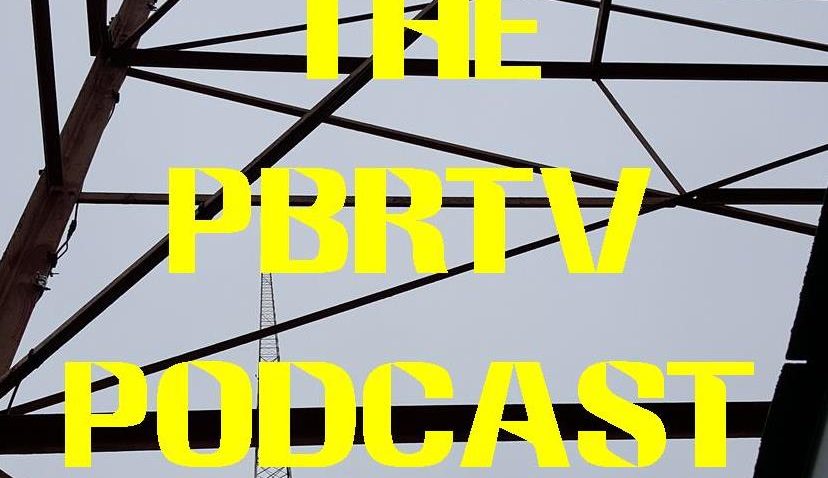Apr
March 30, 2009. . .
Zworykin was a Russian immigrant who had obtained his doctorate from Pitt three years earlier. His research at Westinghouse primarily concerned development of the cathode-ray tube — the glass “picture tube” that eventually made electronic TV possible.
The early fax machines that Zworykin was tinkering with at Westinghouse’s plant in East Pittsburgh were an interesting sideline (at best) to his TV research. They scanned pictures and documents by bouncing a small beam of light onto their surface, collecting the reflected image with a photo-cell, and converting the cell’s output into an electrical wave that could be transmitted over the radio.
At the receiving end, a high-output helium lamp scanned a piece of photographic paper, exposing the image.
. . .
 A standard sheet of paper could be scanned and received in less than a minute, the Sun-Tele reported. “Dr. Zworykin’s tele-photo system operates with or without wires. He has made exhaustive laboratory tests and has perfected his apparatus to the extent that its commercial adoption is promised for the near future.”
A standard sheet of paper could be scanned and received in less than a minute, the Sun-Tele reported. “Dr. Zworykin’s tele-photo system operates with or without wires. He has made exhaustive laboratory tests and has perfected his apparatus to the extent that its commercial adoption is promised for the near future.”
Alas, within a couple of months, Zworykin — and all of his television research — would be lured away from Westinghouse by David Sarnoff of RCA, which prevented Pittsburgh from becoming the true birthplace of TV, and Westinghouse from becoming the world’s leader in fax machines.
. . .
Meanwhile, what were grandma and grandpa listening to on the radio on Monday, eighty years ago?
Few — if any — stations were broadcasting 24 hours per day. Pittsburgh’s four stations — KDKA, KQV (1380), WJAS (1290) and WCAE (1220) — generally signed on between 6:45 and 8 a.m. with news and weather reports before running religious programming or shows aimed at housewives.
WJAS, for instance, offered a program of “meat recipes” at 9 a.m. and the “Shopping Show” at 9:15, while KDKA had advice for “the hair and scalp” at 9:10. WCAE had an on-air “Cooking School” at 10:15.
. . .

Programs in 1929 generally ran 15 or 30 minutes. In-between were musical interludes — mainly performed live by in-studio organists or small combos, though “late recordings” were offered in a few time slots. (The practice of playing records over-the-air was considered low-class by most big-city radio stations.)
Although network programming didn’t generally begin until the early evening, one of the earliest syndicated programs in radio history aired at 6:48 p.m. Monday (and every weekday) on KQV.
“Amos ‘n Andy” originated at Chicago’s WMAQ and was sent to KQV and about 70 other stations each week on “transcriptions” (records). Played by two white men using exaggerated “black” accents, the show would eventually be viewed as racially offensive.
Indeed, the Pittsburgh Courier helped lead the attack against “Amos ‘n Andy.”
. . .
But in 1929, most listeners were enthralled by the mix of comedy, political comedy and soap opera that “Amos ‘n Andy” provided. They were also fascinated by the glimpse it offered (albeit flawed and stereotyped) of the lives of African-Americans from the South who had moved North to the “big city.”
The show’s increasing popularity (former President Coolidge was a devoted fan) led “Amos ‘n Andy” to move to the NBC Blue Network later that year, where it became the network’s highest rated radio program of all time.
. . .
 Other highlights on local airwaves on the night of Monday, March 25, would have included “The Voice of Firestone” on WCAE and the NBC Red Network. This week’s 30 minute episode included opera and classical music, plus a medley of songs written by Irving Berlin.
Other highlights on local airwaves on the night of Monday, March 25, would have included “The Voice of Firestone” on WCAE and the NBC Red Network. This week’s 30 minute episode included opera and classical music, plus a medley of songs written by Irving Berlin.
Later that night, however, WCAE had a real treat for local listeners. Movie star Tom Mix would be interviewed at 11 o’clock on the “Davis Radio Jubilee.” Known for his rootin’-tootin’ cowboy pictures, Mix was a native of central Pennsylvania and grew up in Dubois.
Mix was back in Pennsylvania this week to make a personal appearance at the Stanley Theater, Downtown, along with his “Wonder Horse,” Tony.
. . .
Meanwhile, KDKA and the NBC Blue Network were heavily promoting that week’s episode of “The Edison Recorders,” sponsored by the Thomas A. Edison Co.
Every Monday night at 9, the show featured 30 minutes of music selected by a celebrity and performed by “Edison Recording Artists.” Tonight’s selections were chosen by “America’s sweetheart,” actress and producer Mary Pickford.
Because Edison’s publicity materials didn’t always make clear that the celebrity wasn’t actually going to be on the show, Arthur Gorman, radio editor of the Pittsburgh Press, noted that Mary would participate “only in spirit.”
“Edison Recorders” didn’t last long. That summer, Edison stopped shipping new records and on Dec. 31, 1929, it exited the phonograph business permanently.
. . .
 Out-of-town signals that could be heard in Western Pennsylvania (the airwaves were much less cluttered then) included Cincinnati’s WLW (700), Cleveland’s WTAM (1070), Schenectady’s WGY (790) and Detroit’s WJR (780), and local newspapers here carried schedules for these and other stations.
Out-of-town signals that could be heard in Western Pennsylvania (the airwaves were much less cluttered then) included Cincinnati’s WLW (700), Cleveland’s WTAM (1070), Schenectady’s WGY (790) and Detroit’s WJR (780), and local newspapers here carried schedules for these and other stations.
One out-of-town station that could mainly be heard in Pennsylvania’s “Drake country” between Pittsburgh and Erie was WLBW (1260) in Oil City.
From 6 to 7 p.m. Monday, the 500-watt station owned and operated by the Petroleum Telephone Co. was featuring songs performed by the glee club of the members of Phi Kappa fraternity at the University of Pittsburgh.
According to the Press, the special broadcast was arranged by William S. Perry, a Pitt graduate who was then working as WLBW’s announcer.
. . .
Perry was apparently out of a job in a year or two, when the publisher of the Dayton Daily News purchased WLBW and moved it to western Ohio, where it became today’s WHIO (1290).
(Years later, the Dayton paper’s parent company would be back in the broadcasting business in Pittsburgh when it purchased WIIC-TV — now WPXI — but that’s another story.)
. . .
There’s one curious item in the radio listings of the last week of March, 1929. Several stations advertised that they would be broadcasting the “correct time” — KQV at 7 p.m., for example, and WJAS at 7:59.
Does that mean they broadcast the incorrect time during the rest of the day?
And if listeners didn’t already know what time it was, how did they know when to tune in to get the correct time?

Investors were nervous on the last Monday in March, 1929, after stock prices tumbled five to 10 percent.
Cynics claimed that consumers were over-extended on credit, that businesses were over-capitalized, and that banks were taking wild gambles on investments they didn’t understand.
But financial experts reassured the public that America’s financial system was sound. There was “no sound reason for fearing anything like a financial or industrial collapse,” the New York Times told its readers. “The fundamental conditions are nearly all as promising as ever.”
As we all know, the stock market continued to go up and up forever, and there were absolutely no lessons for anyone to learn.
. . .
 Meanwhile, this week in Pittsburgh radio, Westinghouse engineer Vladimir Zworykin was demonstrating a new method for transmitting pictures or text via wireless.
Meanwhile, this week in Pittsburgh radio, Westinghouse engineer Vladimir Zworykin was demonstrating a new method for transmitting pictures or text via wireless.
The experiments were being conducted over Westinghouse’s KDKA when the station was otherwise off-the-air. KDKA, incidentally, was then located at 980 kHz — or, because most radio dials were then still calibrated in wavelengths instead of frequencies, 305.9 meters.
“The day is not far off when you may flash a photograph or a letter of several hundred words to friends in Tokio, Paris, Buenos Aires or any distant point, in less than a minute,” reported the Pittsburgh Sun-Telegraph, a Hearst newspaper and one of the city’s two afternoon dailies.

